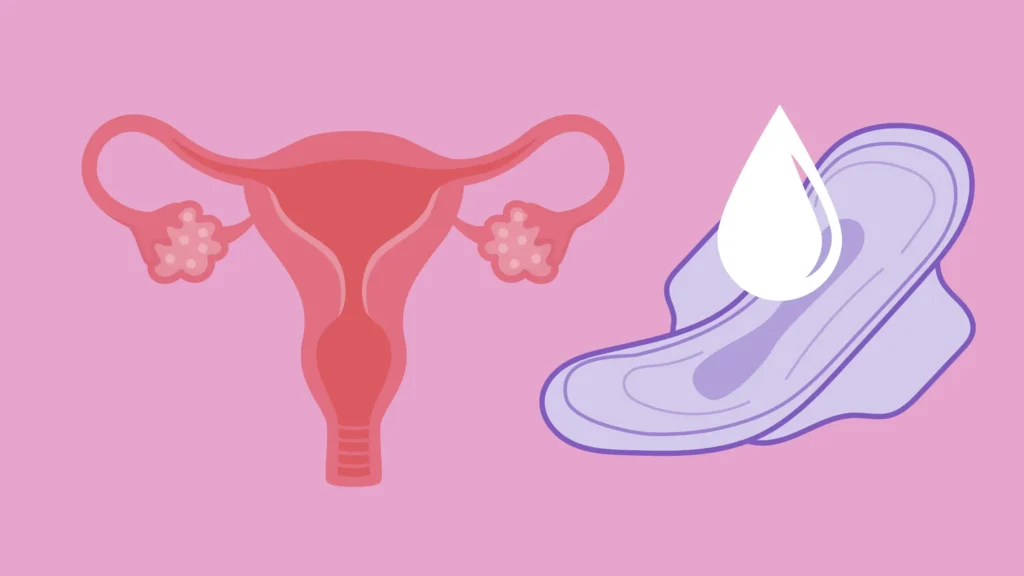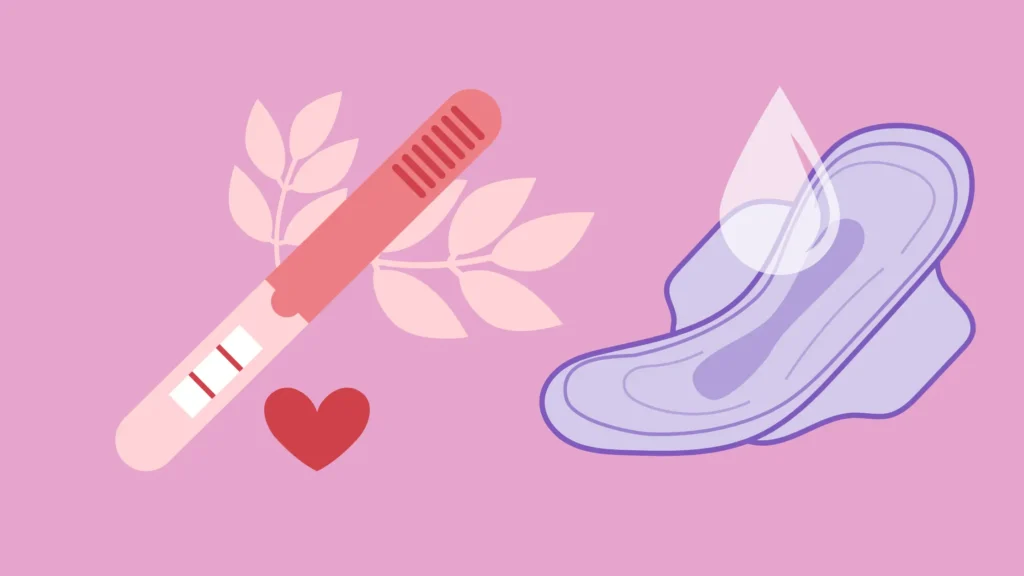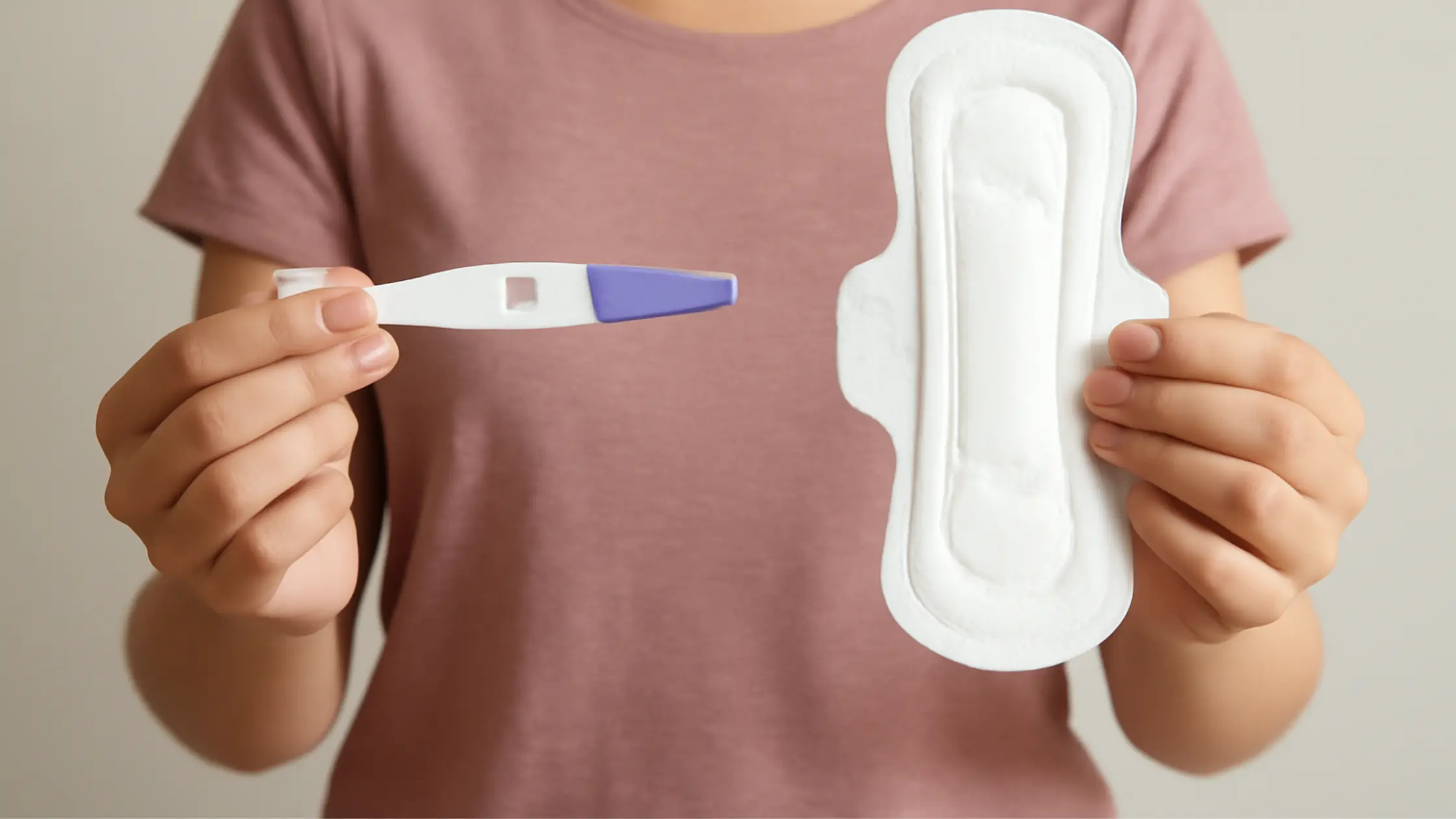When determining whether discharge before period vs early pregnancy is the cause of changes in your body, it’s important to consider the subtle hormonal differences that occur before and during early pregnancy. Both conditions are commonly accompanied by discharge that resemble one another, but being aware of the different characteristics that set them apart in terms of consistency, color and the timing might help in making the distinction.
Table of Contents
- What is Cervical Mucus?
- Discharge Before Period: What to Expect?
- Early Pregnancy Discharge: What to Expect?
- Detailed Comparison: Discharge Before Period vs Early Pregnancy
- What Does the Color of Discharge Indicate?
- What Other Symptoms Should You Look For?
- Can You Differentiate Pregnancy from Menstruation with Discharge Alone?
- Frequently Asked Questions on Discharge Before Period vs Early Pregnancy
- Conclusion: Discharge Before Period vs Early Pregnancy
What is Cervical Mucus?

First of all, it may be useful to have a basic grasp of cervical mucus (or discharge). As part of your natural defense and reproductive process, the cervix secretes mucus. The color, consistency, and amount of this mucus shift with hormonal changes during your menstrual cycle and the early stages of pregnancy.
Hormonal Influence on Cervical Mucus:
- Estrogen: During the first half of your menstrual month (follicular phase), estrogen in your body rises, and this hormone-related change is evident in the levels of stretchy, slippery, and clear cervical mucus. This helps the sperm to ease its way into the cervix to enhance faster and better conception.
- Progesterone: In the second half of the cycle (luteal phase), progesterone increases to prepare the uterus for potential implantation. This results in thicker and less abundant cervical mucus, contributing to the discharge you see before your period. It also helps protect the uterine lining for a potential pregnancy.
In early pregnancy, the body remains in a heightened progesterone state, which leads to the continuation of thicker discharge throughout early pregnancy.
Discharge Before Period: What to Expect?

Before menstruation, your body undergoes hormonal changes that prepare you for your period. This fall in the estrogen level and increase in the progesterone level tend to result in the following types of discharge:
Key Characteristics of Discharge Before Your Period:
- Color: The color of it is typically white, creamy or milky and this indicates hormonal changes. It can also be altered by about a day or two due to other, perhaps lifestyle related factors such as diet, stress, or level of physical activity throughout the menstrual cycle.
- Consistency: The discharge is usually thicker and more opaque as your body prepares to shed the uterine lining. This texture helps protect against infection during menstruation by creating a barrier in the cervix.
- Amount: There is generally a decrease in discharge compared to the ovulation phase, although it can vary from person to person, depending on hormonal changes and individual cycles. The discharge can be lighter and less noticeable.
- Texture: It may feel sticky, and the mucus is less slippery and stretchy. This can make it harder to detect during daily activities and may be less noticeable to the individual as it’s more contained within the vaginal canal.
- Timing: This discharge often begins to appear a few days before menstruation. It’s usually short-lived, continuing until your period begins or slightly beyond. The mucus tends to taper off once menstruation starts.
Early Pregnancy Discharge: What to Expect?

During early pregnancy, the changes that occur as a result of hormonal changes also include discharge. When a woman ovulates, she becomes pregnant and the body will produce human chorionic gonadotropin (hCG) to sustain the pregnancy. Progesterone levels increase to sustain pregnancy, and this makes the discharge more in quantity and thick.
Key Characteristics of Early Pregnancy Discharge:
- Color: Most early pregnancy discharge will be white, creamy or milky, although they may also be clear. This occurs when your progesterone levels are high and offer protection to the uterus, as progesterone helps to keep your cervical mucus levels up so that the pregnancy stays in place.
- Consistency: The discharge tends to be thicker and more abundant than pre-period discharge, as progesterone increases mucus production to safeguard the cervix and the pregnancy. This ensures the cervix remains closed and the uterus is protected.
- Amount: There is often more discharge than usual during early pregnancy, continuing for weeks. This increase is one of the earliest signs of pregnancy, noticeable within the first trimester, and continues as a protective mechanism for the pregnancy.
- Texture: It remains sticky and sometimes can feel watery, especially as pregnancy progresses. The consistency becomes more fluid in later stages but should remain odorless, with no signs of infection.
- Timing: This discharge increases after implantation (6-12 days post-ovulation) and continues through pregnancy. The rise is most notable in the first trimester, although it subsequently declines throughout the remainder of the pregnancy as hormone levels begin to settle.
Detailed Comparison: Discharge Before Period vs Early Pregnancy
Let’s break down the characteristics of discharge before period vs early pregnancy in a more visual format. This comparison will help to pick up some minor distinctions:
| Feature | Discharge Before Period | Early Pregnancy Discharge |
| Color | White, creamy, or milky. Sometimes yellow or brown. | White, creamy, milky. Can be clear or yellowish. |
| Consistency | Thick and sticky, opaque. | Thicker and more abundant, may be sticky or watery. |
| Amount | Decreases compared to the ovulation phase. | Increases as pregnancy progresses. |
| Timing | Begins a few days before menstruation. | Begins around 6-12 days post-ovulation (implantation). |
| Other Symptoms | May accompany PMS symptoms (mood swings, bloating). | May be accompanied by early pregnancy symptoms (fatigue, nausea). |
| Possible Variations | Can be slightly yellow or brown at the end of the cycle. | Can appear in the early weeks of pregnancy and may continue throughout the pregnancy. |
What Does the Color of Discharge Indicate?

White Discharge Before Period vs Early Pregnancy
- Before Period: Although it is not a usual situation, white discharge prior to the period is common and normal. It tends to be lumpy and creamy because of the increase in the progesterone hormone profile in anticipation of the menstrual period. This may be more apparent on the luteal phase and can also have variations in consistency, either more sticky or a little more viscous, with changes in hormones, physical activity, stress, or adjustments in food and lifestyle. This flow is normally a few days prior to your period.
- Early Pregnancy: White discharge in early pregnancy also indicates high progesterone levels, but the amount tends to be greater, and the discharge may last for a longer period. This douching can be a constant increase in discharge, and this may even be maintained throughout the pregnancy, as part of providing a natural shield to cover the cervix and the uterus against infections, physical damage, or foreign bacteria. The consistency can also vary a little each week of the first trimester.
Yellow Discharge Before Period vs Early Pregnancy
- Before Period: A yellowish mess before a period is normal, in that it may be light yellow in color and not come with odor or irritation. It may simply be a symptom of the body preparing to menstruate, as there are associated changes in the hormones causing the production of cervical mucus. The yellowish hue typically appears toward the end of the luteal phase and doesn’t generally cause discomfort unless it’s linked to an underlying infection.
- Early Pregnancy: Yellow discharge in early pregnancy can be a sign of pregnancy, though it’s important to note that if the discharge is bright yellow or has a foul smell, it could indicate an infection (e.g., yeast infection or bacterial vaginosis), which requires medical attention. It’s vital to monitor changes in the discharge’s color, texture, and amount during this time, especially if it’s accompanied by itching or discomfort.
Brown Discharge Before Period vs Early Pregnancy
- Before Period: Brown discharge is common at the end or beginning of a period when old blood needs to be removed from the body. This is typical and does not need to be a concern unless accompanied by any abnormal pain, heavy bleeding or abnormal patterns of cycles which may be a sign of a greater problem. The brown in color may be due to the progressive discharge of the old blood out of the uterine lining.
- Early Pregnancy: Brown discharge during early pregnancy might be implantation bleeding and it occurs when the fertilized egg implants itself on the uterus wall. This may be light, or brownish, sometimes spotted, in a short time. But when one has a heavy period that lasts longer (several days) or is accompanied by cramps or pains, then it may be a matter of concern, and a doctor must be seen. These changes should be closely monitored in order to be able to intervene early.
What Other Symptoms Should You Look For?
Both discharge before period vs early pregnancy can come with similar symptoms, like mild cramping, but some signs will be more specific to pregnancy.
Common Symptoms Before Your Period:

- Premenstrual Syndrome (PMS): Mood swings, irritability, bloating, and tender breasts are common symptoms of PMS. These discomforts typically begin a week or two before your period and may also include headaches, changes in appetite, sleep patterns, and digestive issues like bloating. Additionally, fatigue is often experienced along with cramps, making daily activities feel harder to manage.
- Fatigue: A mild sense of tiredness is common before menstruation, often linked to hormonal fluctuations. This fatigue can feel like low energy levels, making it difficult to focus, stay motivated, or perform tasks efficiently throughout the day. It may subside once the period begins, though some may continue to feel drained during the initial days of menstruation.
- Cramping: This is the slight cramping experienced before the onset of your period, and it should be caused by hormonal changes. These pains tend to be low or tender, beginning 1 or 2 days before the period and, typically, occurring in the pelvis or lower abdomen. This may be explained by the uterus being ready to dispose of its lining, and the cramps may sometimes get worse before getting the period.
Common Early Pregnancy Symptoms:

- Morning Sickness: Nausea is a common thing during the early pregnancy, especially in the early mornings. It may take many weeks, during which the patient usually feels uncomfortable, may lose his/her appetite, and may be sensitive to some odors. This symptom can be activated by the fluctuation of the hormones especially in the increase of hCG and can lead to dehydration especially with the wrong nutrition or lack of it.
- Fatigue: An overwhelming sense of tiredness is often stronger than PMS fatigue. This exhaustion can persist throughout the day and might make regular activities feel more difficult to manage or even impossible. It’s typically attributed to increased progesterone levels, which slow down metabolism and increase the demand for energy in the body.
- Tender Breasts: More pronounced than PMS-related breast tenderness, early pregnancy often causes swollen, sensitive breasts. This can be accompanied by a tingling sensation or heightened sensitivity to touch. The skin around the nipples may darken as well, and some women experience sharper discomfort, especially when wearing tight clothing or during physical activity.
- Missed Period: Often the first noticeable sign of pregnancy. A missed period usually follows conception, but stress, health issues, or hormonal imbalances can sometimes cause similar delays. It’s important to confirm with a test, especially if other pregnancy symptoms like nausea or fatigue are present, to rule out other possible causes for the missed cycle.
Can You Differentiate Pregnancy from Menstruation with Discharge Alone?
While discharge before period vs early pregnancy may appear similar at first glance, it’s important to remember that discharge alone isn’t a reliable method to confirm pregnancy. The timing of discharge, the presence of other symptoms like a missed period, and a pregnancy test are much more accurate for diagnosing early pregnancy.
Frequently Asked Questions on Discharge Before Period vs Early Pregnancy
1. Can I tell if I’m pregnant by discharge?
While discharge before the period vs early pregnancy can be similar, it’s not the most reliable way to confirm pregnancy. However, persistent or increased discharge after a missed period may be an indicator of pregnancy.
2. What does brown discharge mean in early pregnancy?
Brown discharge in early pregnancy could be implantation bleeding, which is common in the early days following conception. It typically appears light and is not a cause for concern unless it becomes heavy.
3. When should I worry about discharge?
Yellow or green color of your discharge with an unpleasant odor, heavy bleeding, or severe pains may identify a health problem and an infection. It is recommended to speak to a medical professional.
4. Is it normal to have yellow discharge during early pregnancy?
Mild yellow discharge may be normal during early pregnancy, but bright yellow and smelly discharge should not be the case since it indicates infection. Contact your doctor should you be worried.
Conclusion: Discharge Before Period vs Early Pregnancy
In the battle of discharge before period vs early pregnancy, the key lies in paying close attention to the timing, color, amount, and texture of your discharge. While they may appear similar, the hormonal fluctuations tied to each scenario create distinct differences in the patterns of cervical mucus. If you are unsure about your symptoms, it’s always a good idea to consult with a healthcare provider or take a pregnancy test for confirmation.
Explore more on Pregnancy Must –
